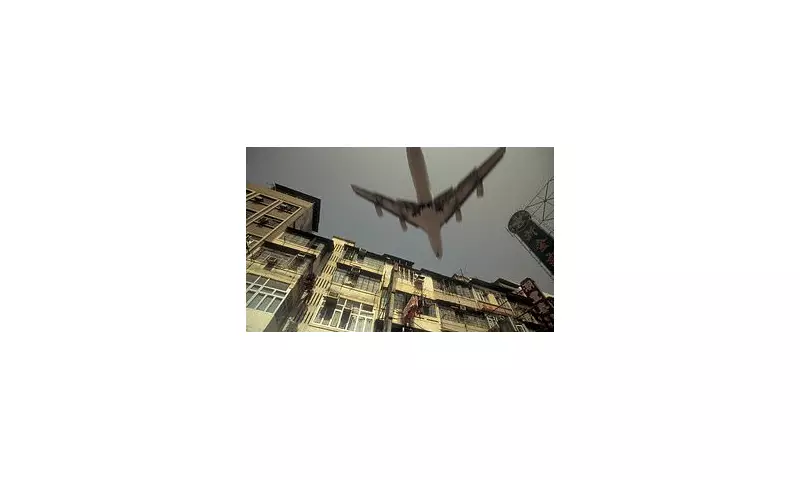
For 73 years, one airport held the undisputed title of the world's most terrifying place to land a plane. Kai Tak, Hong Kong's primary airport until 1998, demanded extraordinary skill from pilots who had to navigate a heart-stopping approach between mountains and skyscrapers before touching down on a single runway jutting into Victoria Harbour.
The Infamous 'Hong Kong Turn'
The airport's legendary challenge was the technically demanding Runway 13 approach, which had to be flown entirely manually. Pilots were required to descend to a low altitude before executing a sharp, right-hand turn at about 47 degrees around a large red-and-white checkerboard marker on a hillside.
This manoeuvre, famously known as the 'Hong Kong Turn', brought aircraft alarmingly close to the city's residential towers. Passengers often reported catching fleeting glimpses into people's kitchens as their plane zoomed past at just 1,000 feet of altitude. The sheer anxiety experienced by those on board soon earned the nickname 'Kai Tak Heart Attack'.
Life in the Shadow of the Runway
The airport's operation had a profound impact on daily life in central Hong Kong. Archival footage shows planes descending mere metres above busy motorways, their landing gear barely clearing treetops before a rattling touchdown.
Local residents became accustomed to the overwhelming noise, often pausing conversations as aircraft engines roared directly overhead, only resuming once the sound faded. The powerful jet wash would sometimes send laundry flying off balconies and cause ceiling fans to rattle indoors. The disruption eventually led authorities to impose a nightly curfew in an attempt to manage the chaos.
Transformation and Legacy
After 73 years of service since opening in 1925, Kai Tak's final departure occurred on 6 July 1998. Crowds gathered along the waterfront to witness the historic moment before Hong Kong International Airport officially assumed its role as the city's main aviation hub that same day.
The former airport site is now undergoing a massive transformation into a new urban district. The area now features:
- Residential areas and public services
- A $4 billion sports and entertainment complex, Kai Tak Sports Park
- A 50,000-seat stadium with retractable roof
- Shopping malls and public promenades
The former runway has been redeveloped into the Kai Tak Cruise Terminal, a futuristic, wave-shaped complex designed by the architect behind London's iconic Gherkin building. While Kai Tak's terrifying landings are now history, its legacy continues to captivate aviation enthusiasts worldwide.





